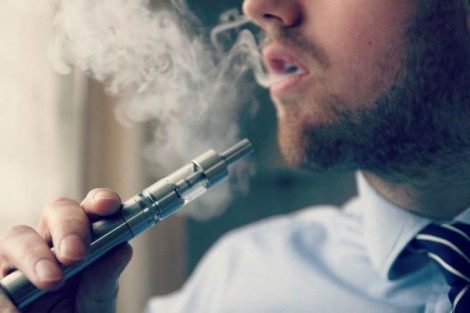For immediate release: December 8, 2015
Boston, MA – Diacetyl, a flavoring chemical linked to cases of severe respiratory disease, was found in more than 75% of flavored electronic cigarettes and refill liquids tested by researchers at Harvard T.H. Chan School of Public Health. Two other potentially harmful related compounds were also found in many of the tested flavors, which included varieties with potential appeal to young people such as Cotton Candy, Fruit Squirts, and Cupcake.
The study will be published online December 8, 2015 in Environmental Health Perspectives and will be available here after the embargo lifts: http://ehp.niehs.nih.gov/15-10185.
The Occupational Safety and Health Administration and the flavoring industry have warned workers about diacetyl because of the association between inhaling this chemical and the debilitating respiratory disease bronchiolitis obliterans, colloquially termed “Popcorn Lung” because it first appeared in workers who inhaled artificial butter flavor in microwave popcorn processing facilities.
“Recognition of the hazards associated with inhaling flavoring chemicals started with ‘Popcorn Lung’ over a decade ago. However, diacetyl and other related flavoring chemicals are used in many other flavors beyond butter-flavored popcorn, including fruit flavors, alcohol flavors, and, we learned in our study, candy flavored e-cigarettes,” said lead author Joseph Allen, assistant professor of exposure assessment science.
There are currently more than 7,000 varieties of flavored e-cigarettes and e-juice (liquid containing nicotine that is used in refillable devices) on the market. Although the popularity and use of e-cigarettes continues to increase, there is a lack of data on their potential health effects. E-cigarettes are not currently regulated, but the U.S. Food and Drug Administration (FDA) has issued a proposed rule to include e-cigarettes under its authority to regulate certain tobacco and nicotine-containing products.
Allen and colleagues tested 51 types of flavored e-cigarettes and liquids sold by leading brands for the presence of diacetyl, acetoin, and 2,3-pentanedione, two related flavoring compounds that are listed as “high priority,” i.e. they may pose a respiratory hazard in the workplace, by the Flavor and Extract Manufacturers Association. Each e-cigarette was inserted into a sealed chamber attached to a lab-built device that drew air through the e-cigarette for eight seconds at a time with a resting period of 15 or 30 second between each draw. The air stream was then analyzed.
At least one of the three chemicals was detected in 47 of the 51 flavors tested. Diacetyl was detected above the laboratory limit of detection in 39 of the flavors tested. Acetoin and 2,3-pentanedione were detected in 46 and 23 and of the flavors, respectively.
“Since most of the health concerns about e-cigarettes have focused on nicotine, there is still much we do not know about e-cigarettes. In addition to containing varying levels of the addictive substance nicotine, they also contain other cancer-causing chemicals, such as formaldehyde, and as our study shows, flavoring chemicals that can cause lung damage,” said study co-author David Christiani, Elkan Blout Professor of Environmental Genetics.
Other Harvard Chan School authors included, Skye Flanigan, Mallory LeBlanc, Jose Vallarino, Piers MacNaughton, and James Stewart.
This study was supported by NIH/NIEHS Center Grant P30ES000002.
“Flavoring Chemicals in E-Cigarettes: Diacetyl, 2,3-Pentanedione, and Acetoin in a Sample of 51 1 Products, Including Fruit-, Candy-, and Cocktail-Flavored E-Cigarettes,” Joseph G. Allen, Skye S. Flanigan, Mallory LeBlanc, Jose Vallarino, Piers MacNaughton, James H. Stewart, David C. Christiani, Environmental Health Perspectives, December 8, 2015, doi: 10.1289/ehp.1510185
Visit the Harvard Chan website for the latest news, press releases, and multimedia offerings.
For more information:
Marge Dwyer
mhdwyer@hsph.harvard.edu
617.432.8416
photo: Flickr/Creative Commons (www.vaping360.com)
Harvard T.H. Chan School of Public Health brings together dedicated experts from many disciplines to educate new generations of global health leaders and produce powerful ideas that improve the lives and health of people everywhere. As a community of leading scientists, educators, and students, we work together to take innovative ideas from the laboratory to people’s lives—not only making scientific breakthroughs, but also working to change individual behaviors, public policies, and health care practices. Each year, more than 400 faculty members at Harvard Chan School teach 1,000-plus full-time students from around the world and train thousands more through online and executive education courses. Founded in 1913 as the Harvard-MIT School of Health Officers, the School is recognized as America’s oldest professional training program in public health.
